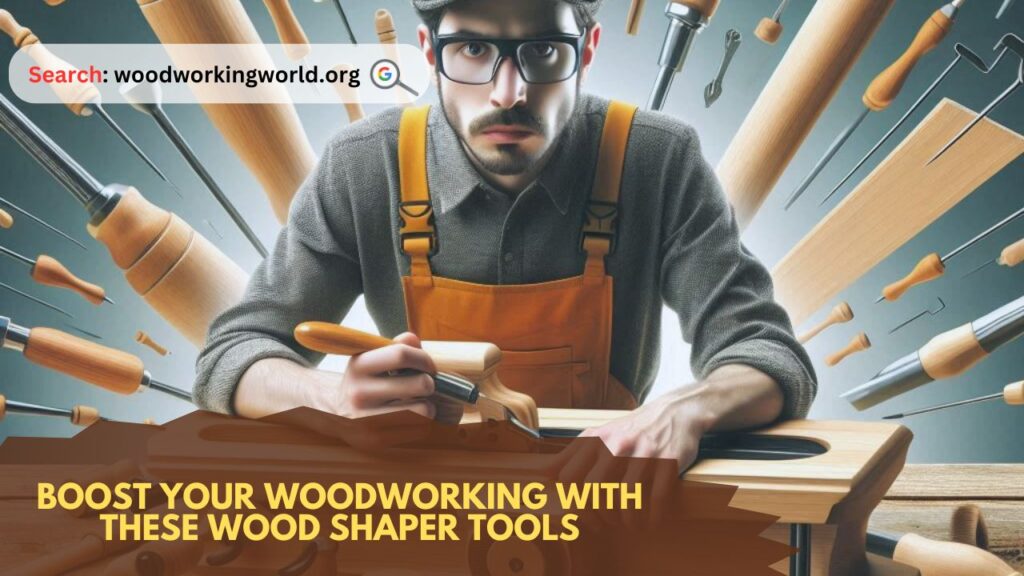Boost Your Woodworking with These Wood Shaper Tools
Wood shaper tools are essential for any woodworking enthusiast or professional looking to achieve precision and creativity in their projects. With the right tools, you can shape, mold, and craft wood into stunning designs and functional pieces. In this guide, we’ll explore must-have wood shaper tools, how to choose the right ones, and tips to maximize their potential.

Why Use Wood Shaper Tools?
Wood shaper tools provide unparalleled precision and versatility for a variety of woodworking tasks. Here’s why you should consider adding them to your workshop:
- Custom Design Capabilities: Create intricate moldings, decorative edges, and custom profiles.
- Enhanced Efficiency: Complete complex tasks faster and with greater accuracy.
- Versatility: Handle a wide range of woodworking tasks, from edging to joinery.
- Durability: High-quality tools are built to withstand the demands of professional use.
Pro Tip: Invest in carbide-tipped tools for longer-lasting sharpness and better results on hardwoods.
Essential Wood Shaper Tools for Your Workshop
1. Shaper Cutter Heads
Cutter heads are the heart of a wood shaper, determining the type and quality of the cuts.
Best For: Creating custom profiles, grooves, and moldings.
Why You Need It: Achieve precise and professional cuts for decorative and functional elements.
2. Router Bit Adapters
Router bit adapters allow you to use router bits on your wood shaper.
Best For: Expanding the versatility of your wood shaper.
Why You Need It: Access a broader range of cutting options without buying additional cutter heads.
3. Feather Boards
Feather boards keep the wood securely in place during shaping.
Best For: Preventing kickback and ensuring consistent cuts.
Why You Need It: Improve safety and achieve smoother, more accurate cuts.
4. Push Blocks and Push Sticks
Push blocks and sticks protect your hands while feeding wood through the shaper.
Best For: Maintaining safe hand distance from cutting tools.
Why You Need It: Prevent accidents and maintain control over the workpiece.
5. Dust Collection System
A dust collection system keeps your workspace clean and safe.
Best For: Reducing dust and debris during woodworking.
Why You Need It: Improve air quality and visibility while reducing cleanup time.
6. Shaper Fence System
A high-quality fence system ensures accurate and repeatable cuts.
Best For: Aligning and guiding wood during shaping tasks.
Why You Need It: Achieve professional-grade results with consistent alignment.
Start Your Next Project With Teds’ Archive Of 16,000 Plans!
Instant access to all 16,000 woodworking plans with step-by-step details, photos, materials lists and more
Monthly free plans with lifetime membership access – No renewals, recurring fees or other charges


How to Choose the Right Wood Shaper Tools
1. Project Requirements:
- Assess the types of cuts and designs you need for your projects.
2. Material Compatibility:
- Choose tools that can handle the wood types you work with.
3. Quality and Durability:
- Opt for high-quality, carbide-tipped tools for longer life and better performance.
4. Compatibility:
- Ensure tools are compatible with your wood shaper model.
5. Safety Features:
- Look for tools with ergonomic designs and safety enhancements.
Pro Tip: Keep a variety of cutter profiles on hand to handle different tasks efficiently.
Maximizing the Potential of Your Wood Shaper Tools
1. Regular Maintenance:
- Clean tools after each use to prevent resin buildup.
- Sharpen cutting edges regularly to maintain precision.
2. Proper Storage:
- Store tools in protective cases to prevent damage.
3. Safety Practices:
- Always wear protective gear, including goggles and ear protection.
- Use push blocks and sticks to keep hands away from cutting areas.
4. Experiment with Profiles:
- Don’t be afraid to try new cutter profiles to expand your design possibilities.
Pro Tip: Keep a log of cutter settings for repeatable results on future projects.
Table: Essential Wood Shaper Tools and Their Uses
| Tool | Purpose | Benefits |
|---|---|---|
| Shaper Cutter Heads | Create custom profiles | Precise and professional cuts |
| Router Bit Adapters | Use router bits on wood shapers | Increased versatility |
| Feather Boards | Secure wood during shaping | Smoother and safer cuts |
| Push Blocks/Sticks | Hand protection during feeding | Enhanced safety |
| Dust Collection System | Remove dust and debris | Cleaner and safer workspace |
| Shaper Fence System | Guide wood for accurate cuts | Consistent and repeatable results |
FAQs
1. What is the difference between a wood shaper and a router table?
A wood shaper is larger and more powerful, designed for heavy-duty tasks and larger cutter heads. Router tables are more compact and suitable for lighter tasks.
2. Can I use router bits on a wood shaper?
Yes, with the help of a router bit adapter.
3. How do I maintain wood shaper tools?
Clean them regularly, store them properly, and sharpen cutting edges as needed.
4. What materials can I shape with wood shaper tools?
Wood shaper tools are primarily designed for wood but can also handle composite materials.
5. Are wood shaper tools safe to use?
Yes, when used with proper safety gear and techniques.
Video from a woodworking expert

Conclusion
Boosting your woodworking capabilities with the right wood shaper tools can take your projects to the next level. From cutter heads to dust collection systems, investing in high-quality tools will enhance precision, safety, and efficiency in your workshop. Start upgrading your toolset today and experience the difference in your craftsmanship.